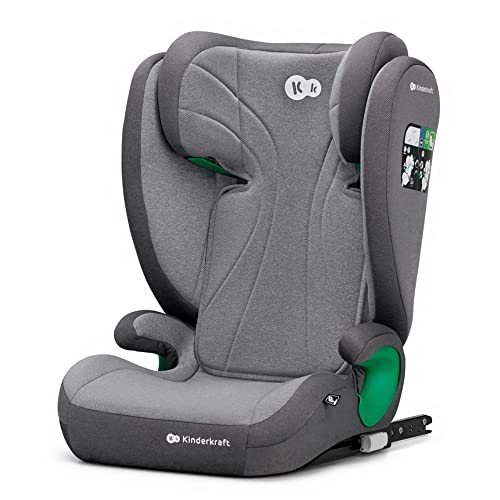How To Create An Awesome Instagram Video About Pushchair

Understanding Prams and Pushchairs: A Comprehensive Guide for Parents
When it concerns picking the best mode of transportation for little ones, moms and dads are frequently overwhelmed by the variety of choices available. Prams and pushchairs are among the most typical options, and each has its own distinct functions accommodating various needs. Small Prams For Newborns dives deep into the world of prams and pushchairs, detailing their differences, benefits, drawbacks, and tips for picking the best one for your family.
What is the Difference Between a Pram and a Pushchair?
In the beginning glimpse, prams and pushchairs might seem comparable, but they serve various functions based on a kid's age and developmental phase. Below are the primary differences:
| Feature | Pram | Pushchair |
|---|---|---|
| Age Range | Typically for newborns approximately 6 months | Ideal for kids 6 months and older |
| Style | Flat, horizontal lying position for newborns | Upright seating position; more versatile and mobile |
| Use | Primarily for strolling with infants | May include several seating options and configurations |
| Foldability | Often bulkier and less portable | Normally light-weight and foldable for easy transport |
Types of Prams and Pushchairs
Picking the ideal pram or pushchair can depend on different factors, consisting of the type, functions, and lifestyle of the household. Below are the primary kinds of prams and pushchairs readily available in the market:
Prams
- Traditional Prams: Designed for newborns, they typically include a deep and comfy bassinet, making them ideal for young babies.
- Travel System Prams: These can shift from a bassinet to a toddler seat, frequently consisting of a baby vehicle seat for ease of travel.
Pushchairs
- Requirement Pushchairs: Offer an upright seat and appropriate for older babies and toddlers. They frequently feature reclining capabilities.
- Umbrella Pushchairs: Lightweight and highly portable, these models fold compactly, making them perfect for travel.
- All-Terrain Pushchairs: Designed for rugged landscapes, they feature bigger wheels and superior suspension systems for off-road capabilities.
Benefits and Disadvantages
Benefits of Prams
- Comfort for Newborns: Their flat, horizontal style is best for the healthy spinal advancement of infants.
- Stylish Designs: Many prams come with elegant looks, appealing to fashion-forward moms and dads.
- Large: They tend to offer a bigger space for babies to move comfortably.
Downsides of Prams
- Bulkiness: They can be heavy and difficult to maneuver, making them less convenient for public transport or crowded spaces.
- Cost: Prams usually feature a higher cost compared to pushchairs.
Advantages of Pushchairs
- Mobility: Many pushchairs fold compactly and are light-weight, providing remarkable convenience for parents on the go.
- Adaptability: With numerous configurations readily available, pushchairs can suit different stages of a kid's growth.
- Much easier to Store: Their smaller size makes them simpler to keep in compact areas.
Drawbacks of Pushchairs
- Less Comfort for Newborns: Most standard pushchairs disagree for really young babies unless designed with a reclining function.
- Toughness Concerns: Budget pushchairs may not stand up to substantial use compared to tougher pram designs.
Tips for Choosing the Right Pram or Pushchair
Choosing the right pram or pushchair needs careful consideration. Here are some critical aspects to remember:
- Age Appropriateness: Consider your kid's age. A pram might be better for a newborn, while a pushchair might be chosen for an older child.
Lifestyle Compatibility:
- If you often travel or use public transportation, a light-weight choice might be easier.
- For active families who enjoy outdoor activities, a sturdy, all-terrain pushchair could be advantageous.
Storage Needs:
- Think about where you'll keep the pram or pushchair, as some models can use up substantial area.
- Budget plan Constraints: Prams can be costly, especially designer models. Identify functions that are essential to you before purchasing.
- Safety Features: Always search for vital safety functions like straps, brakes, and sturdiness when selecting a pram or pushchair.
FAQs
1. At what age can my baby start using a pushchair?
The majority of pushchairs are ideal for babies from 6 months, but some convertible models can securely accommodate more youthful infants when used with an automobile seat or bassinet attachment.
2. Can I take a pram or pushchair on public transportation?
The majority of public transportation systems accommodate prams and pushchairs, however it's a good idea to examine particular policy standards ahead of time.
3. How can I maintain my pram or pushchair?
Routine cleansing, looking for wear and tear, and lubing moving parts will help in maintaining your pram or pushchair's performance and durability.
4. Are travel systems worth the financial investment?
Travel systems can be a terrific financial investment for moms and dads who frequently travel, providing an all-in-one option from car to stroller. They use convenience and ease of transition, specifically for new parents.
5. Are there prams and pushchairs with extra features?
Yes, numerous modern designs come with functions like cup holders, storage baskets, adjustable deals with, canopies for sun shading, and even folding systems that can be run with one hand.
Choosing in between a pram and a pushchair is a choice that impacts day-to-day parenting routines. By comprehending the differences, benefits, and appropriate options, families can make informed choices that harmonize with their way of life requires. Whether it's a leisurely stroll in the park with a pram or an adventurous outing with an all-terrain pushchair, the very best options typically result in treasured memories and satisfying experiences for both parents and kids.

